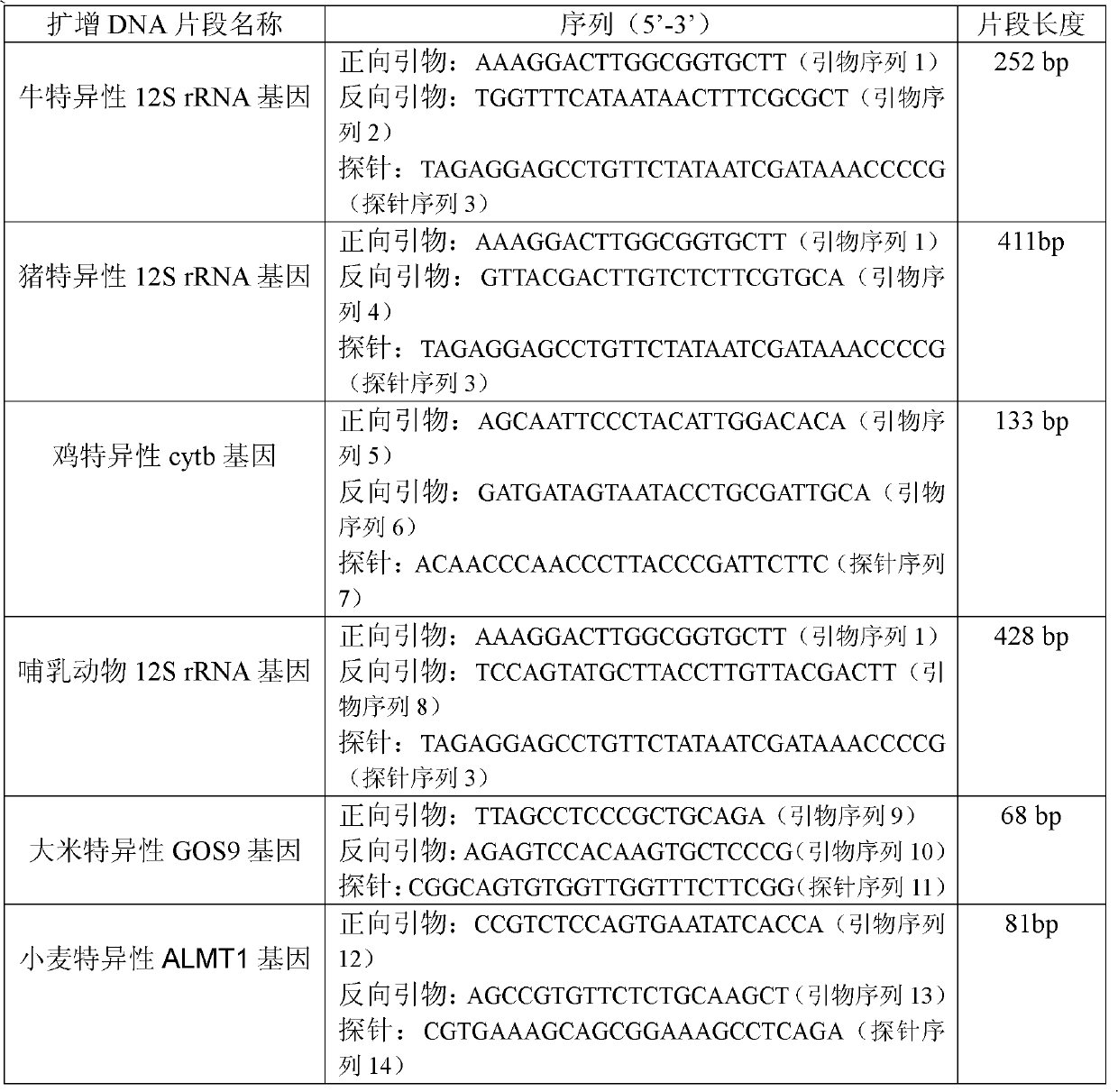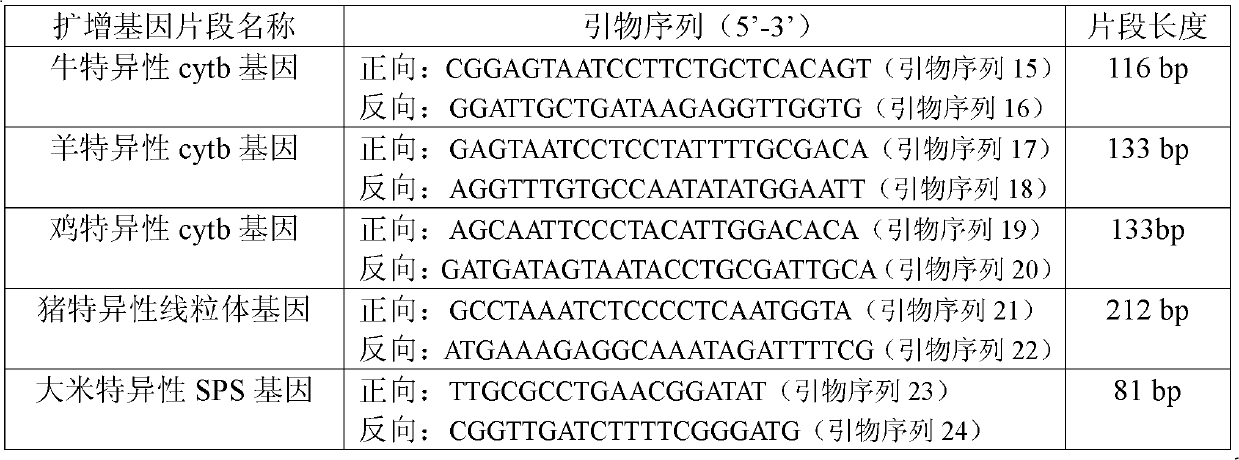Illegal cooling oil identification method and application thereof
An identification method and a technology for waste oil, which are applied in the field of gene diagnosis, can solve the problems of high detection cost, complicated operation, and low specificity of detection indicators, and achieve the effect of high specificity.
- Summary
- Abstract
- Description
- Claims
- Application Information
AI Technical Summary
Problems solved by technology
Method used
Image
Examples
Embodiment 1
[0026] 1.1. Experimental samples
[0027] Oil samples to be inspected: 3 suspected gutter oil samples commissioned by Shenzhen Baoan Public Security Bureau, and the 3 oil samples to be inspected are numbered 1, 2, and 3 respectively. Positive control sample: waste oil sample provided by the National Center for Disease Control and Prevention; negative control sample: salad blend oil purchased from Wal-Mart Supermarket in Shenzhen; blank control sample: deionized water.
[0028] 1.2 Main reagents and equipment
[0029] CTAB lysate, chloroform, isoamyl alcohol, absolute ethanol, Tris-EDTA solution, fluorescent PCR kit (Dalian Bao Biological Company), centrifuge (Eppendorf, Germany), fluorescent PCR amplification instrument (ABI7500, USA).
[0030] 1.3 Nucleic acid enrichment and extraction
[0031] Use nucleic acid lysate to enrich and extract DNA from the oil sample to be tested. The specific operation is as follows: add 5mL of 2% CTAB lysate into a 50mL centrifuge tube, add 3...
Embodiment 2
[0045] 2.1 Oil samples to be inspected: 4 suspected waste oil samples commissioned by Shenzhen Longgang Public Security Bureau, and the 4 oil samples to be inspected are numbered 4, 5, 6 and 7 respectively. Positive control sample: waste oil sample provided by the National Center for Disease Control and Prevention; negative control sample: peanut oil purchased from Shenzhen Wal-Mart Supermarket; blank control sample: deionized water.
[0046] 2.2 Main reagents and equipment
[0047] DNeasy Plant Mini Kit Nucleic Acid Extraction Kit (QIAGEN, Germany), PCR Kit (Dalian Bao Biological Company), Centrifuge (Eppendorf, Germany), PCR Amplifier (MJRPTC-220, USA).
[0048] 2.3 Nucleic acid enrichment and extraction
[0049] Use the DNeasy Plant Mini Kit kit for nucleic acid enrichment and extraction. The specific operation is as follows: Add 5mL Buffer AP1 into a 50mL centrifuge tube, add 35mL oil sample and mix well, shake at 50°C and 250rpm for 1h, centrifuge at 10000rpm for 5min, r...
PUM
 Login to View More
Login to View More Abstract
Description
Claims
Application Information
 Login to View More
Login to View More - R&D
- Intellectual Property
- Life Sciences
- Materials
- Tech Scout
- Unparalleled Data Quality
- Higher Quality Content
- 60% Fewer Hallucinations
Browse by: Latest US Patents, China's latest patents, Technical Efficacy Thesaurus, Application Domain, Technology Topic, Popular Technical Reports.
© 2025 PatSnap. All rights reserved.Legal|Privacy policy|Modern Slavery Act Transparency Statement|Sitemap|About US| Contact US: help@patsnap.com



